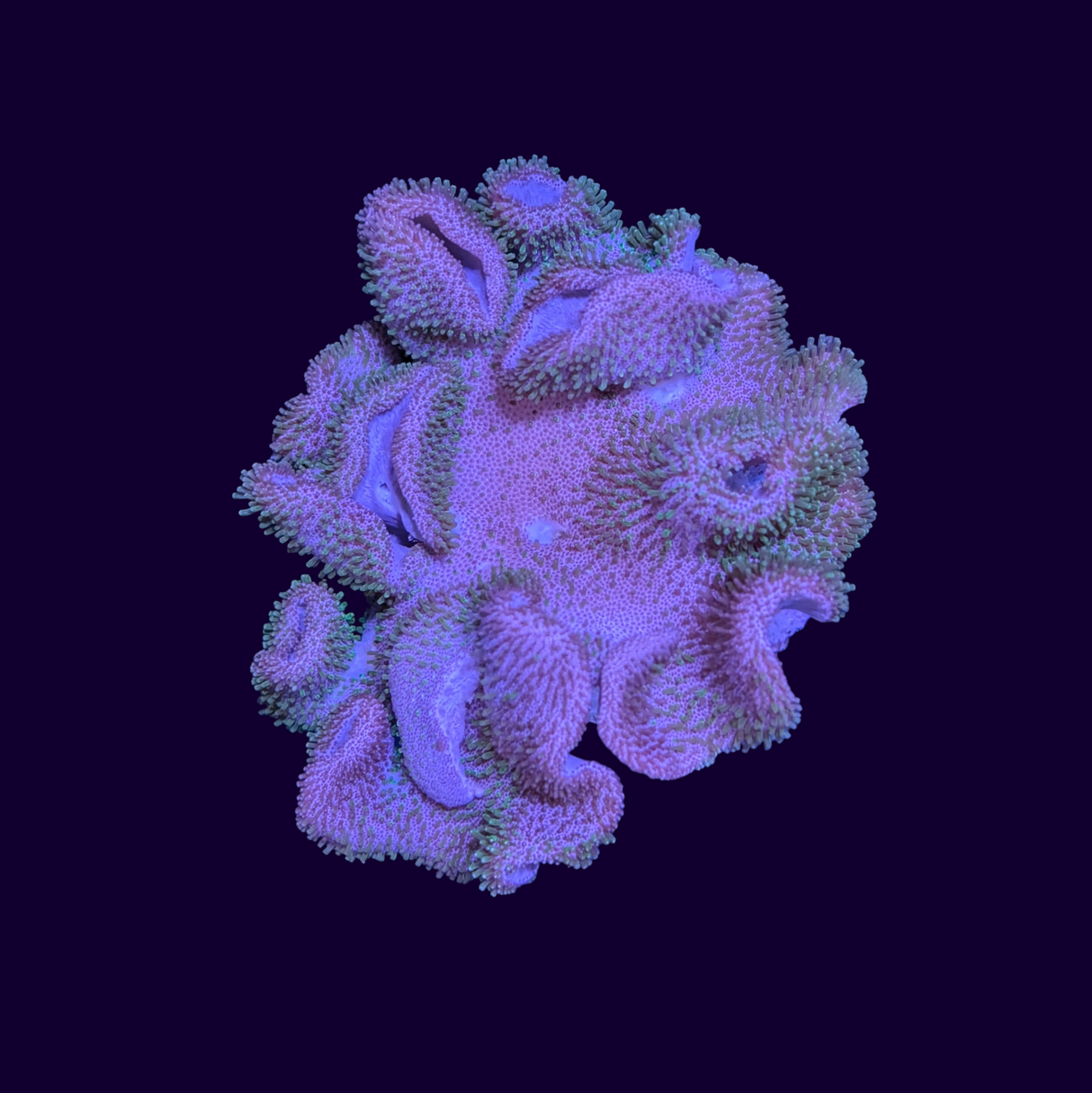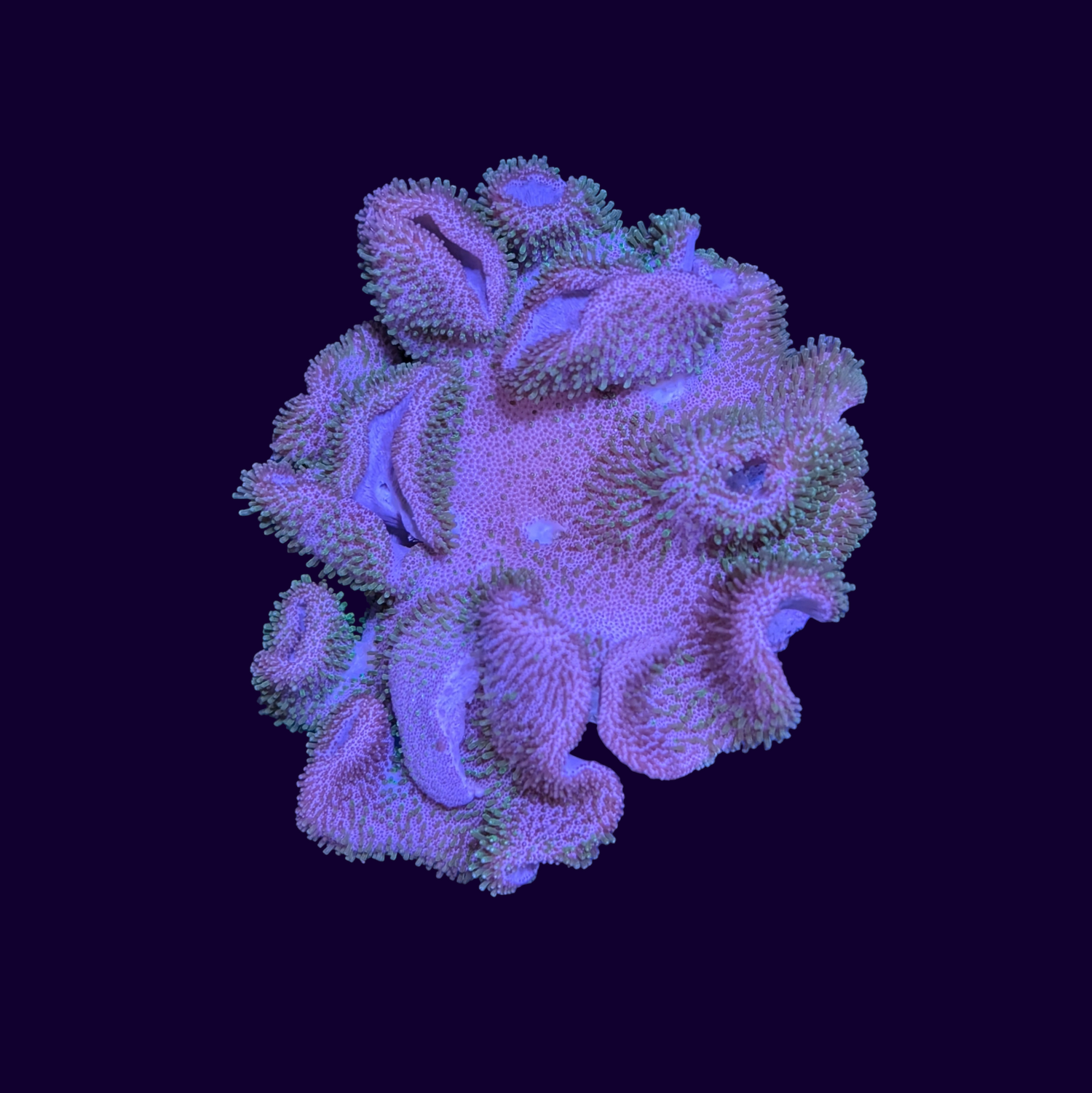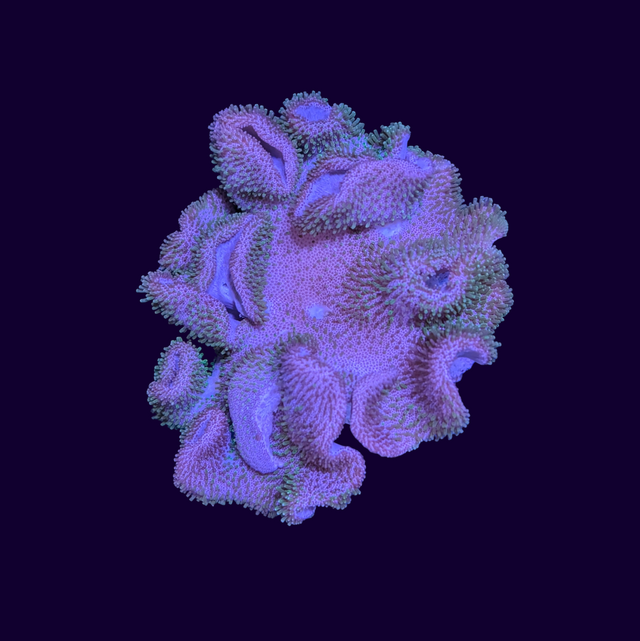Green Polyp Toadstool Leather
Green Polyp Toadstool Leather is backordered and will ship as soon as it is back in stock.
Couldn't load pickup availability
Description
Description
Type: Lobophytum leather
Name: N/A
Size:
Fixing: live rock
Cabbage Coral Care Guide
Cabbage Coral (Sinularia dura) is a hardy and beautiful addition to saltwater aquariums. Its unique appearance, resembling the leaves of a cabbage, makes it a favourite among reef enthusiasts. Follow this care guide to keep your Cabbage Coral thriving:
Quick Facts
- Scientific Name: Sinularia dura
- Common Names: Cabbage Coral, Cabbage Leather Coral
- Care Level: Easy
- Lighting: Moderate to High
- Water Flow: Moderate to Strong
- Placement: Mid to Bottom
- Tank Size: 20 gallons or larger
Placement in Tank
Cabbage Coral prefers being placed on rock structures in the middle to lower parts of the tank. Ensure there is adequate space around the coral for its growth and to avoid contact with other corals, as it may release chemicals that inhibit their growth.
Lighting Requirements
Moderate to high lighting is essential for optimal health. Use LED, T5, or metal halide lighting to provide sufficient intensity. If introducing the coral to a new environment, acclimate it slowly to higher light levels to prevent bleaching.
Water Flow
Moderate to strong water flow is ideal for Cabbage Coral. Proper flow helps prevent detritus buildup on the coral's surface and aids in nutrient uptake. Avoid placing the coral in areas with low water movement.
Water Parameters
Maintaining stable water conditions is crucial for the health of your Cabbage Coral. Aim for the following parameters:
- Temperature: 75°F to 80°F (24°C to 27°C)
- Salinity: 1.023 to 1.025
- pH: 8.1 to 8.4
- Alkalinity: 8 to 12 dKH
- Calcium: 400 to 450 ppm
- Magnesium: 1250 to 1350 ppm
- Nitrates: <5 ppm
- Phosphates: <0.03 ppm
Feeding
Cabbage Coral primarily relies on photosynthesis through its symbiotic zooxanthellae. However, supplemental feeding can enhance growth and colouration. Offer small amounts of planktonic foods such as phytoplankton, marine snow, or specialized coral foods 1-2 times per week.
Compatibility
Cabbage Coral is generally peaceful but may release allelopathic chemicals to compete for space. Avoid placing it near other soft corals, and use activated carbon in your filtration system to mitigate chemical warfare.
Propagation
Cabbage Coral can be propagated by carefully cutting a portion of the coral and attaching it to a frag plug or rock with reef-safe glue. Ensure clean cuts and provide stable tank conditions during the recovery period.
Common Issues
- Bleaching: Caused by sudden changes in lighting or water parameters. Adjust conditions gradually.
- Algae Overgrowth: Keep water parameters in check and maintain adequate flow.
- Detritus Accumulation: Regularly monitor and clean the coral if necessary.
By providing the right environment, Cabbage Coral can flourish and become a striking centrepiece in your reef aquarium. Happy reefing!
Payment & Security
Payment methods
Your payment information is processed securely. We do not store credit card details nor have access to your credit card information.





